The mobile app industry is rapidly evolving, and 2025 is set to introduce groundbreaking innovations. As technology advances, so will the expectations of users. Developers are likely to focus on introducing new mobile app features that redefine user experiences and set fresh benchmarks for functionality. This article explores emerging mobile app features, potential use cases, and why they are expected to trend in 2025.

1. Emotion Recognition Technology: A Game-Changer in Mobile App Features
Emotion recognition technology is revolutionizing the way mobile apps interact with users. At its core, this advanced technology leverages artificial intelligence (AI) to analyze and interpret human emotions through various inputs such as facial expressions, voice tones, and even text messages. By understanding these emotional cues, apps can respond in a way that feels genuinely personalized and empathetic. This transformative capability makes emotion recognition one of the most promising mobile app features in modern development.
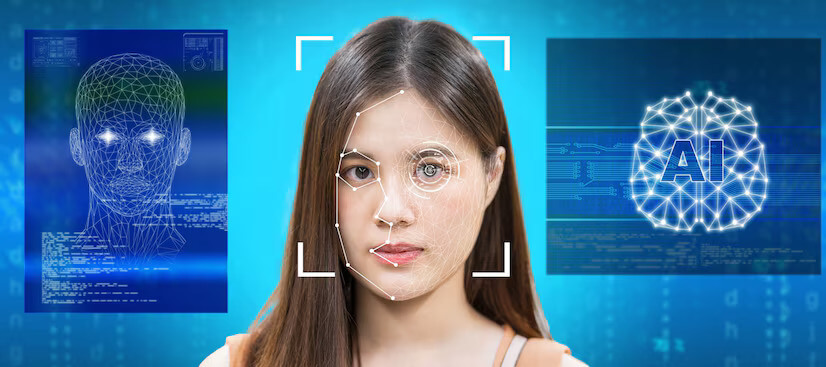
The applications of this technology span diverse sectors. For instance, mental health apps use emotion recognition to detect signs of stress, anxiety, or depression. By analyzing a user’s voice or facial expressions during interactions, these apps can offer customized coping strategies and mental well-being tips, providing an invaluable tool for users seeking emotional support. Similarly, in the realm of customer support, mobile apps can gauge satisfaction levels in real time during conversations. This enables businesses to promptly address issues or enhance the overall customer experience. Gaming apps, too, stand to benefit significantly—by monitoring a player’s emotional state, games can dynamically adjust difficulty levels, ensuring an engaging and enjoyable experience tailored to each user.
The reason this technology is set to trend lies in its ability to bridge the emotional gap between humans and machines. As emotional intelligence becomes a priority in tech innovation, mobile app features like emotion recognition are paving the way for interactions that feel human-centric and empathetic. This not only enhances user satisfaction but also fosters a deeper connection between users and the apps they rely on, making emotion recognition technology a cornerstone for future app development.
Find details on Enterprise AI Solutions enhancing business operations with artificial intelligence.
2. Ambient Computing: Redefining Convenience with Smart Mobile App Features

Ambient computing is a cutting-edge technological concept that seamlessly integrates devices, software, and systems to work in the background without requiring direct user input. This technology enables mobile apps to deliver context-aware services, adapting intuitively to user needs. The essence of ambient computing lies in creating an environment where technology blends effortlessly into daily routines, making interactions both convenient and unobtrusive. As such, it represents one of the most innovative mobile app features shaping the future of user experiences.
The practical applications of ambient computing are both diverse and transformative. In smart home control, mobile apps can use this technology to automatically adjust lighting, temperature, and music based on user preferences or routines. Imagine walking into your home after a long day, and the app has already set the ideal ambiance based on your usual habits. In healthcare, ambient computing takes personalization to the next level by enabling apps to monitor vital signs continuously and send real-time alerts to doctors or caregivers if abnormalities are detected. This ensures timely intervention, potentially saving lives. Travel apps also leverage this technology by offering hyper-personalized recommendations for hotels, restaurants, and attractions based on a user’s location, preferences, and past behavior, simplifying trip planning like never before.
The growing integration of IoT devices into everyday life is a significant driver behind the rise of ambient computing. As smart devices become ubiquitous, mobile app features powered by ambient computing are poised to deliver unparalleled convenience and functionality. This trend underscores a future where technology anticipates needs, enhances productivity, and effortlessly integrates into daily life, making ambient computing an indispensable aspect of modern app development.
3. Predictive UI/UX: Enhancing User Experience with Smarter Mobile App Features

Predictive UI/UX is an innovative design approach that focuses on anticipating user needs based on their past behavior. By analyzing patterns and preferences, predictive interfaces proactively offer recommendations or shortcuts to streamline user interactions. This forward-thinking feature is revolutionizing mobile app design by making apps more intuitive, efficient, and personalized. As a result, predictive UI/UX has emerged as a game-changing mobile app feature that significantly enhances user satisfaction and engagement.
The use cases of predictive UI/UX are vast and impactful across various industries. In e-commerce apps, predictive technology can suggest frequently bought items, offer personalized product recommendations, or even predict when users may need to reorder essentials, making the shopping experience more seamless and efficient. For fitness apps, this technology analyzes historical performance data to offer customized workout routines, ensuring that users get tailored suggestions that align with their fitness goals. In the world of social media, predictive UI/UX enhances the user experience by prioritizing content in real time based on a user’s interests and past interactions, keeping the feed relevant and engaging.
As users become more accustomed to efficient, tailored experiences, the demand for predictive mobile app features is only set to grow. Predictive UI/UX can save time and reduce the mental load by allowing apps to anticipate and fulfill user needs before they even arise. This trend reflects the broader desire for smarter, more intuitive technology that effortlessly adapts to users’ preferences, making predictive mobile app features an essential aspect of modern app development.
4. Holographic Interfaces: Bringing the Future of 3D to Mobile App Features

Holographic interfaces are at the forefront of technological innovation, allowing users to interact with 3D visuals without the need for special hardware. These immersive interfaces enable an unparalleled level of engagement, enhancing the user experience by offering a truly futuristic interaction model. As mobile app features evolve, holographic interfaces are poised to redefine how we interact with apps, bringing the digital world closer to reality.
The potential uses of holographic interfaces are vast and varied across different fields. In education apps, holographic technology can offer interactive lessons using 3D models, allowing students to visualize complex concepts in ways that traditional textbooks cannot match. In healthcare, surgeons could use holographic interfaces to view 3D scans and medical data in real-time during procedures, significantly enhancing their precision and decision-making. Gaming apps stand to benefit from holographic interfaces by offering users a fully immersive 3D environment, taking gameplay to an entirely new level.
As augmented reality (AR) and virtual reality (VR) technologies continue to advance, integrating holography into mobile app features will provide users with an elevated and more interactive experience. The future of mobile apps is undoubtedly heading towards more immersive, 3D-driven experiences, making holographic interfaces a critical component in that evolution.
5. Zero-UI Interactions: Revolutionizing the Mobile App Experience

Zero-UI interactions represent a major shift away from traditional user interfaces, relying instead on gestures, voice commands, or ambient triggers to control apps. This innovative approach enables users to engage with technology in a more natural and intuitive way, reducing the need for screens and physical controls. As this mobile app feature grows in popularity, it is paving the way for a more seamless, hands-free user experience.
Use cases for zero-UI interactions are already proving their worth across a range of mobile applications. For example, fitness apps can use voice commands or gestures to start a workout, eliminating the need to touch the screen during exercise. In navigation apps, users can adjust routes through simple voice inputs, making it easier to navigate while driving. Shopping apps can also integrate zero-UI interactions, allowing users to scan barcodes or products with gestures, making the process more fluid and user-friendly.
With a growing emphasis on creating more natural, human-like interactions with technology, zero-UI mobile app features are set to become a significant trend. As voice and gesture recognition technologies improve, we can expect these interactions to become more intuitive, ultimately making the user experience more effortless and efficient.
Click the link to check the guide on MVP development.
6. Advanced Biometric Security: Enhancing Mobile App Protection

Advanced biometric security is reshaping the way we think about app security by offering multi-factor authentication using a combination of face recognition, voice recognition, and even behavioral biometrics. This sophisticated approach adds layers of protection to sensitive data, ensuring that only authorized users can access their personal information. As privacy concerns grow, these advanced mobile app features are crucial for securing user data and enhancing overall trust in mobile applications.
In practical terms, advanced biometric security is already making its mark in several industries. In banking apps, multi-factor authentication ensures secure transactions, providing users with peace of mind when managing their finances. Healthcare apps benefit from enhanced security by safeguarding sensitive medical data, protecting patients’ privacy while maintaining access for authorized medical professionals. Social media platforms also rely on advanced biometric security to prevent unauthorized access, ensuring that user accounts remain secure and personal information stays protected.
As cybersecurity becomes a top priority for both users and app developers, advanced biometric security will continue to trend as a key feature in mobile app development services. By offering enhanced protection, these features help safeguard user data and ensure a secure app environment.
7. Hyper-Personalized Push Notifications: Tailoring Content to User Needs

Hyper-personalized push notifications are a powerful mobile app feature that leverages AI to deliver highly relevant, user-specific content. These notifications go beyond generic updates, providing tailored alerts that align with individual preferences, behaviors, and past interactions. By offering content that truly resonates with users, these notifications help boost engagement and create a more meaningful app experience.
The use cases for hyper-personalized push notifications are extensive across various app types. In retail apps, users can be alerted about discounts on items they frequently purchase, driving repeat business and improving customer loyalty. News apps can send updates about topics users actively follow, ensuring they never miss important stories. Fitness apps can use personalized notifications to remind users to achieve their daily goals, encouraging healthier habits and greater app engagement.
In an age where users are constantly bombarded with information, hyper-personalized push notifications provide a way for apps to stand out by offering value and relevance. These notifications not only enhance the user experience but also increase app retention and user satisfaction, making them an essential feature for the future of mobile app development services.
Conclusion
As we move into 2025, the mobile app landscape will continue to evolve with features that push the boundaries of innovation. From emotion recognition to sustainability trackers and advanced biometrics, these emerging mobile app features are set to redefine user expectations.
Further, find detail of must-know software and app development tips for the modern business.
Their ability to address real-world challenges, enhance security, and personalize experiences makes them essential for the next wave of mobile technology. By integrating these features, developers can ensure their apps remain relevant, impactful, and ahead of the curve in this competitive space.
Ready to take your mobile app to the next level in 2025? At Emorphis Technologies, we specialize in integrating cutting-edge features that keep your app ahead of the curve. From AI-driven personalization and seamless integration to advanced security measures and interactive user experiences, we’re here to transform your ideas into impactful solutions.
Don’t just adapt to trends—set them! Connect with Emorphis today to future-proof your mobile app development and deliver exceptional value to your users.


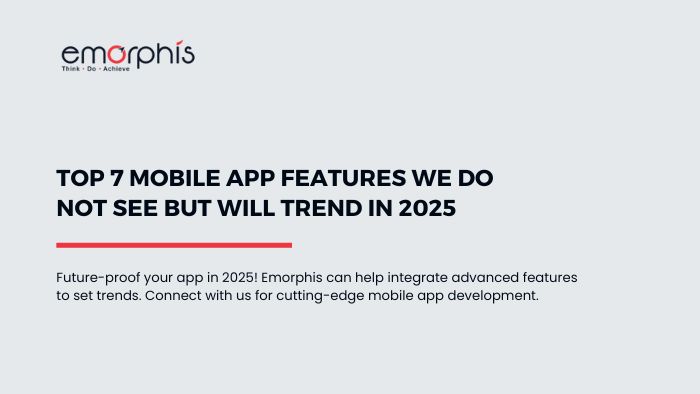
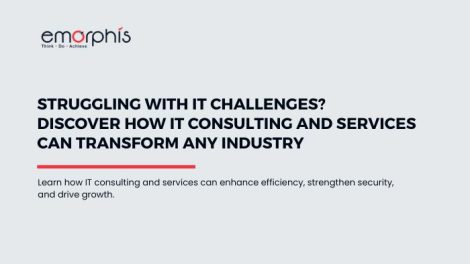
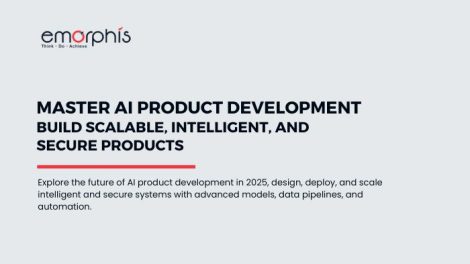

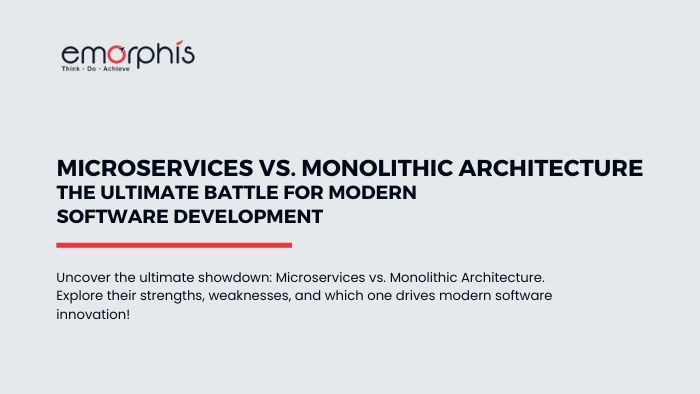 Microservices vs. Monolithic Architecture – The Ultimate Battle for Modern Software Development
Microservices vs. Monolithic Architecture – The Ultimate Battle for Modern Software Development